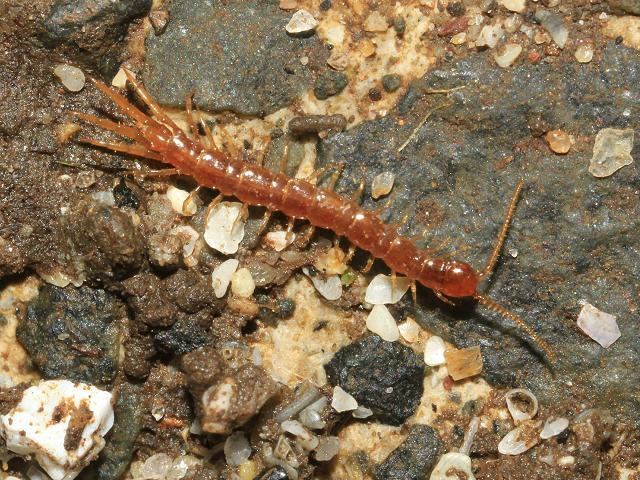Order Lithobiomorpha Rank Species | Class Chilopoda | |
 | ||
Similar Lithobius variegatus, Cryptops hortensis, Geophilus flavus, Lithobiidae, Lithobius | ||
Lithobius microps (also known as stone centipede; or in the United States as Delcore's Centipede (It's synonyms are Lithobius duboscqui and Sigibius puritanicus) is a species of centipede from Lithobiidae family that can be found in the Northeast of the United States, England and South Wales.
Contents
Description
The species is red in colour, fast-moving, and considered to be among the smallest of British centipedes.
In the United States
In the United States, It is known as Delcore's Centipede. It is found mainly in the Northeast United States; in New York, Connecticut, Rhode Island, and Massachusetts. They are one of the most common centipedes in this region.
Description
Delcore's Centipede is usually quite small, up to about 1" long, possibly to 2" long. It can appear red or orange. They have small poison claws on the side of their head. They rarely bite if handled. They are very fast centipedes. Probably one of the fastest. They may be tough to catch. They like to stay hidden under things. They may burrow in the dirt.
United States Habitat & Range
These guys like to hide in wood, under stones and rocks, under small buildings. They are found in dirt. They are most common in gardens, old or dead/rotting wood, and most commonly under stones and rocks, or under small things like dog houses or sheds. They may be seen in basements in winter, but this isn't common. They like to stay outside in the dirt. They may dig a burrow to hibernate in the winter. They may be seen on warm days in December and January. They will commonly come out in April, or whenever it starts to warm up. They are known to be in Southern New England and New York. The range may be expanded by introducing the species.
